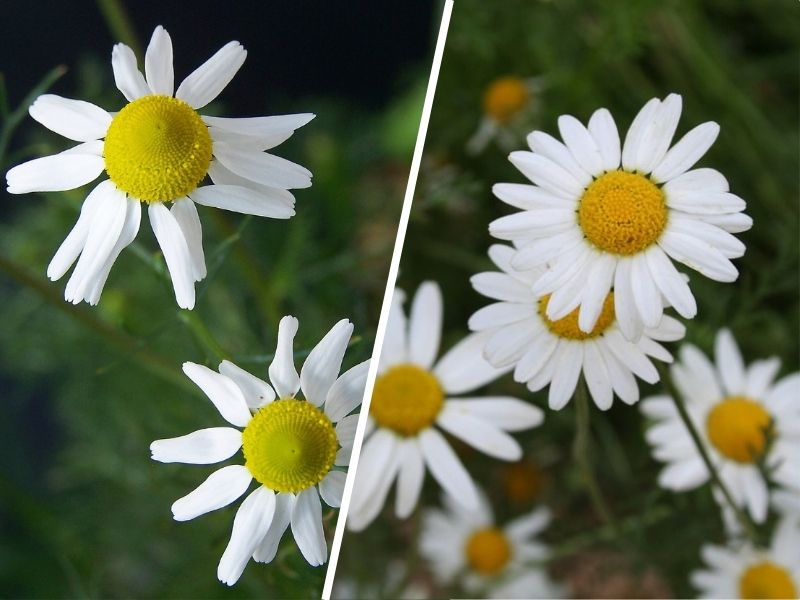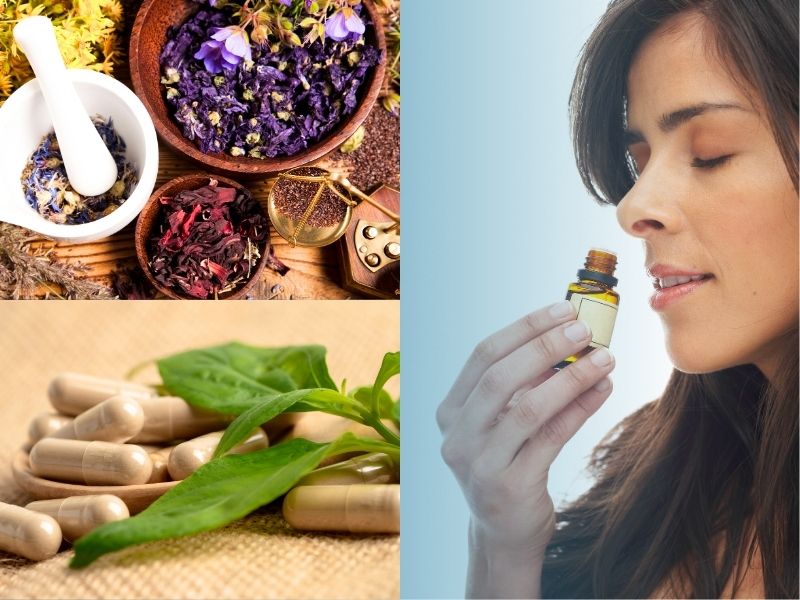Written by Dorene Petersen, ACHS Founding President. First published in the International Herb Association “Chamomile: Herb Of The Year™ 2025” book. Reprinted with permission.
The remarkable chamomile was named the 2025 Herb of the Year™ by the International Herb Association. Chamomile comes in many varieties, but two stand out in herbalism and aromatherapy: Blue chamomile (Matricaria recutita) and Roman chamomile (Chamaemelum nobile). While both offer calming and anti-inflammatory properties, they have distinct botanical characteristics, medicinal benefits, and uses.
Botanical Characteristics
Blue Chamomile (Matricaria recutita)
- Also known as German chamomile
- Annual plant with smooth stems
- Small, daisy-like flowers with a conical, dome-shaped center
- Strong, slightly bitter aroma
- Essential oil has a deep blue hue due to chamazulene, a powerful anti-inflammatory compound
Roman Chamomile (Chamaemelum nobile)
- Perennial plant with slightly hairy stems
- Daisy-like flowers with a flat, solid yellow center
- Strong apple-like scent
- Often used in teas and skin care for its gentle, soothing properties
Key Differences Between Blue and Roman Chamomile

Uses and Benefits
Blue Chamomile:
- Known for its powerful anti-inflammatory effects, making it ideal for supporting skin conditions like eczema and acne
- Frequently used in essential oil blends to maintain calm, clear skin
- Excellent for digestive support when taken as a tea or extract
Roman Chamomile:
- A classic ingredient in herbal teas for relaxation and sleep support
- Gentle enough for children and those with sensitive skin
- Commonly found in skincare and haircare formulations for its soothing properties
Both varieties contain trichomes—tiny hair-like structures that store and release essential oils. These fragile structures require careful harvesting and distillation to preserve their potency.
Watch this recording of our ACHS 2025 Herb Day Celebration to hear Dr. Judith Thompson, Dean of Herbal Medicine, describe why chamomile is one of her favorite herbs!
Identifying the Right Chamomile for You
If you’re looking for a potent anti-inflammatory essential oil, Blue chamomile is the best choice. If you prefer a gentler herb for teas or skincare, Roman chamomile is a better fit. Understanding these differences ensures you get the most out of chamomile’s therapeutic potential.
Interested in learning more about the history, uses, and science behind herbs like chamomile? Explore ACHS’ accredited Herbal Medicine Programs.
This content is for educational purposes only and is not intended to be medical advice. Always use herbs and essential oils with caution and keep out of reach of children. Use particular caution when pregnant or nursing. Always check contraindications and think safety first! The statements herein have not been evaluated by the FDA. Products are not intended to diagnose, treat, cure, or prevent disease.
References:
- Sah, A., Naseef, P. P., Kuruniyan, M. S., Jain, G. K., Zakir, F., & Aggarwal, G. (2022). A Comprehensive Study of Therapeutic Applications of Chamomile. Pharmaceuticals (Basel, Switzerland), 15(10), 1284. https://doi.org/10.3390/ph15101284
- Gupta, V. (2010). Chamomile: A herbal medicine of the past with a bright future (review). Molecular Medicine Reports, 3(6). https://doi.org/10.3892/mmr.2010.377
- Farhoudi, R. (2013). Chemical Constituents and Antioxidant Properties of Matricaria recutita and Chamaemelum nobile Essential Oil Growing Wild in the South West of Iran. Journal of Essential Oil Bearing Plants, 16(4):531-537. https://doi.org/10.1080/0972060X.2013.813219




